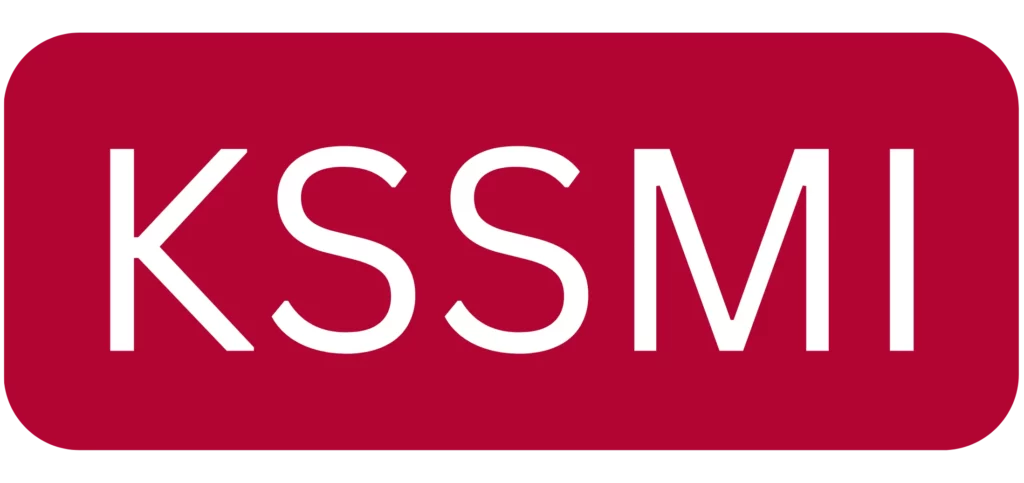To scale acetate eyewear production from 100 to 10,000 frames, you must master five stages: 1) Strategic Design for Manufacturability (DFM) to de-risk production. 2) Fortifying raw material supply chains for acetate and components. 3) Vetting factory floor processes like CNC machining and polishing. 4) Implementing multi-point quality control systems to protect brand standards. 5) Forging a growth partnership by analyzing a manufacturer’s business model, logistics, and future readiness.
Stage 1: De-Risking at the Source: Strategic Planning & DFM
Translating Vision into a Scalable Production Blueprint
The move from boutique to high-volume manufacturing begins with Design for Manufacturability (DFM). This is a non-negotiable process that determines if your design can be efficiently produced at scale without eroding your quality or profit margins.
Critical Warning: Most production failures originate from poor DFM planning. Brands that bypass this stage often face material waste rates exceeding 30% and production delays of 6-8 weeks, directly impacting their launch schedules and budget.
The Tech Pack as Your Single Source of Truth
Your technical package (tech pack) is the definitive blueprint for scaling production. Its function is to eliminate the ambiguity that destroys consistency in high-volume manufacturing. A complete tech pack includes precise dimensions, material needs, color standards, and assembly instructions, preventing costly errors.
Best Practice: You must require tech packs with tolerances specified to ±0.05mm for CNC machining operations. This precision is not optional; it is the only way to guarantee consistent frame symmetry across a 10,000-unit run.
Deconstructing Designs for Scale
Design elements feasible in small batches often create massive bottlenecks at scale. Complex lamination patterns, intricate CNC cutting paths, and non-standard hinge setups multiply production time and drive up rejection rates, harming your unit economics.
For Example: A frame needing 5-axis CNC machining for complex temple curves can increase production time from 80 seconds to 150 seconds per piece. This has a direct and calculable impact on your partner’s throughput capacity and your final cost.
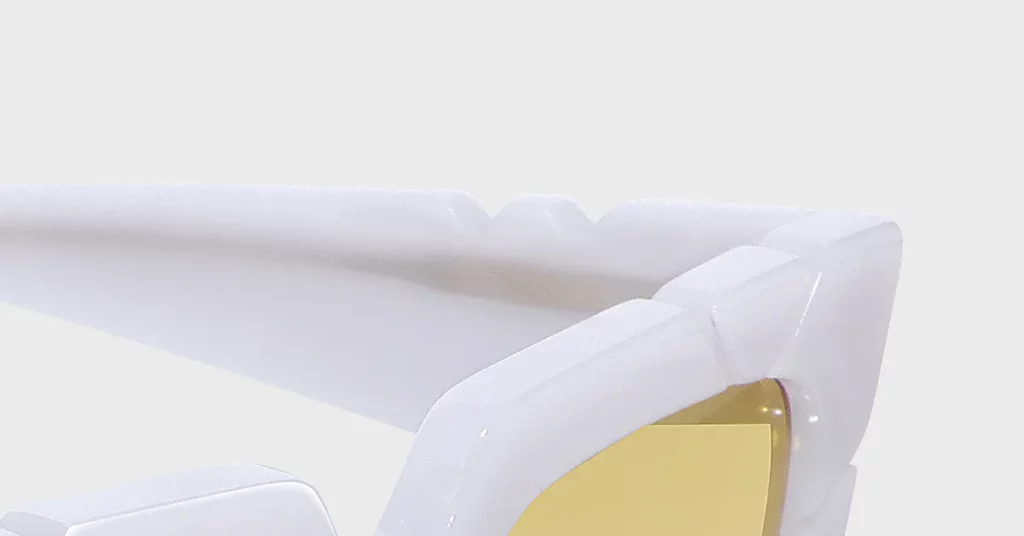
From Hand-Made Sample to Production-Ready Tooling
Moving from a handcrafted prototype to production tooling is a major financial commitment that demands strategic evaluation. Front frame molds typically cost $1,300-$2,000, while temple molds are $1,000-$1,300 per set. You must factor this capital expense into your budget.
Key Metric: Mold creation adds 30-45 days to initial production timelines. This lead time requires careful planning to align with your go-to-market calendar.
Material Strategy Beyond Aesthetics
Your material choice dictates not just product quality but also supply chain stability and cost predictability. Italian Mazzucchelli acetate delivers superior color stability and processing traits but requires longer lead times and higher minimums than Chinese alternatives.
The Bottom Line: Bio-acetate options like Mazzucchelli’s Acetate Renew (60% bio-based, 40% recycled) offer sustainability benefits that appeal to a growing market segment. However, they may demand modified processing parameters that affect production efficiency, a tradeoff you must analyze.
Vetting a Partner’s Pre-Production and Engineering Maturity
A manufacturer’s pre-production sophistication directly correlates with their ability to scale efficiently while protecting your quality standards.
Assessing In-House CAD/CAM and DFM Support
Manufacturers with strong in-house CAD/CAM teams can optimize your designs for production efficiency. Prioritize partners with 3-axis and 5-axis CNC capabilities, as this signals a serious investment in precision manufacturing infrastructure.
Best Practice: Top-tier manufacturers provide DFM feedback within 48 hours of design submission. This speed allows them to identify potential production issues before they become expensive problems for you.
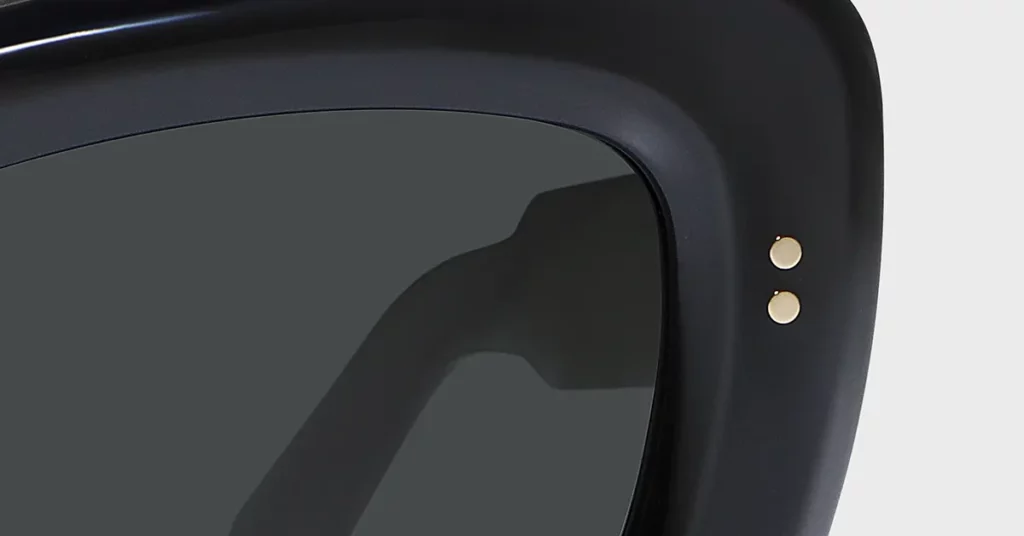
Evaluating Pilot Run and Small-Batch Testing Protocols
Pilot runs reveal a manufacturer’s ability to translate your designs into consistent reality. An effective pilot program tests the entire production flow, from material handling and QC checkpoints to final packaging procedures.
Critical Warning: Manufacturers who skip or rush pilot runs often encounter quality problems that only appear during full production. This oversight results in significant delays and cost overruns that your brand will absorb.
Auditing a Supplier’s Material Sourcing Network
Supply chain resilience demands multiple sourcing options for core materials. Demand that your manufacturing partner maintains relationships with primary suppliers like Mazzucchelli (Italy), Jimei (China), and Jinyu (China), along with vetted secondary sources.
For Example: Mazzucchelli acetate sheets require a 2-4 week lead time from Italy. In contrast, Chinese alternatives from Jimei or Jinyu can be sourced within 1-2 weeks, providing the flexibility needed to manage urgent orders or supply disruptions.
Understanding the Business Impact of MOQs
Minimum Order Quantities (MOQs) are a direct reflection of a manufacturer’s production economics. For acetate frames, you should expect MOQs of 300-600 pieces per model, with specialized designs requiring higher commitments.
Key Metric: MOQ requirements grow with design complexity. A standard design might have a 300-piece MOQ, but a style with custom lamination patterns can demand 1,200+ pieces per model, impacting your inventory risk.
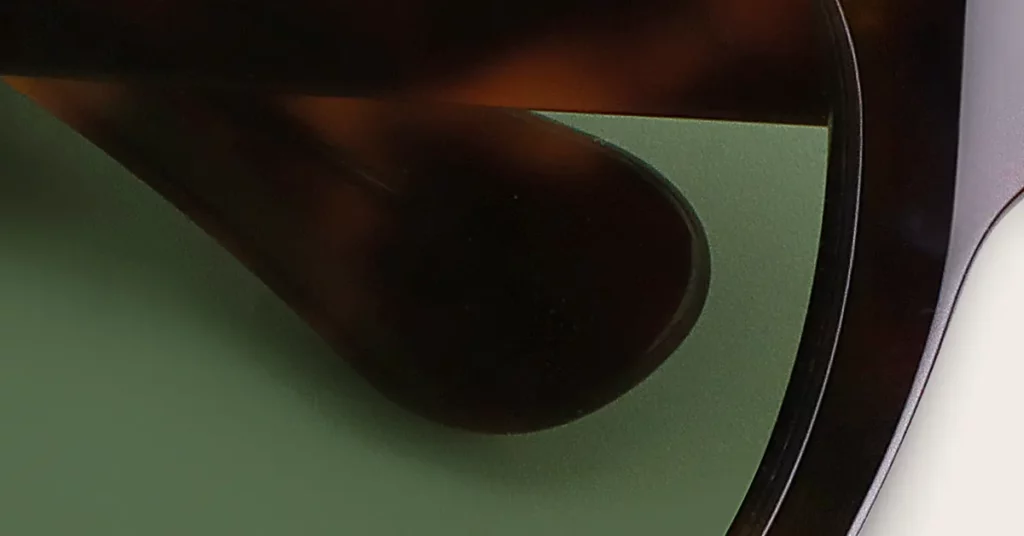
Stage 2: Fortifying the Foundation: Mastering Supply Chains at Scale
Securing the Core Acetate Supply Chain
Acetate supply chain management becomes exponentially more difficult as volume increases. This requires a sourcing strategy that balances quality, cost, and availability to prevent stockouts and production halts.
Due Diligence: Italian vs. Japanese vs. Chinese Acetate
Your sourcing decision for acetate has downstream effects on everything from processing settings to final product quality. The choice is a strategic one based on your brand positioning and budget.
| Attribute | Mazzucchelli (Italy) | Jimei (China) | Jinyu (China) |
| Origin | Italy | China | China |
| Quality Grade | Premium | High | High |
| Lead Time | 2-4 weeks | 1-2 weeks | 1-2 weeks |
| Cost Index | 100% | 70% | 75% |
| Color Stability | Excellent | Good | Good |
Best Practice: Established manufacturers maintain inventory buffers of 30-45 days for core acetate colors. This is a financial discipline that prevents production disruptions during supply chain volatility.
Vetting Acetate Sheets: Analyzing Critical Specs
Technical specifications have a direct impact on your production efficiency. Proper acetate curing, for instance, requires 7 days at 60°C. This process is what prevents shrinkage and deformation during CNC machining.
Critical Warning: Improperly cured acetate can lead to up to 3% dimensional changes during processing. This technical failure causes frame distortion and higher rejection rates, directly increasing your cost per unit.
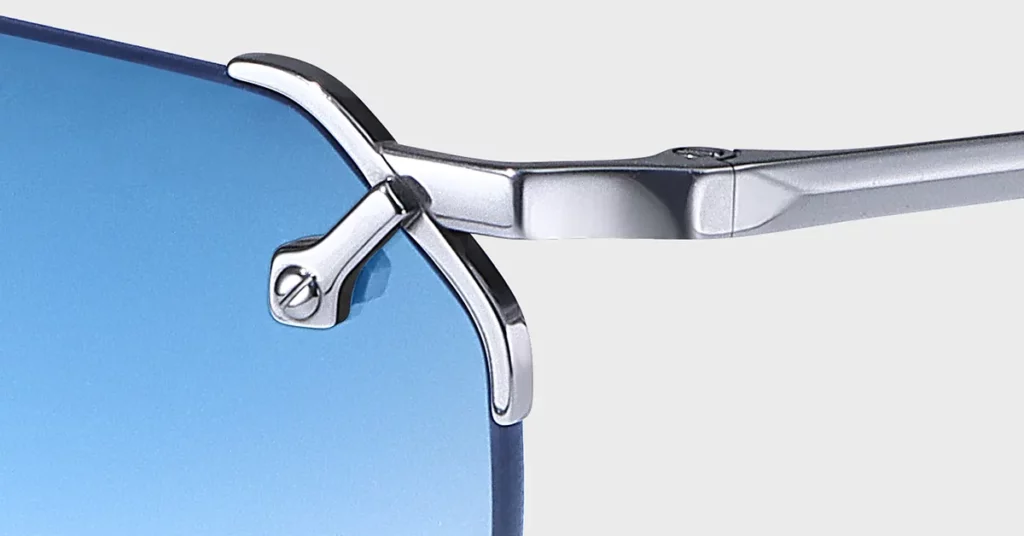
Supply Chain Risk Mitigation: Secondary Supplier Relationships
Production continuity depends on having multiple qualified suppliers for every single component. You must verify that your primary manufacturer has secondary sources that can be activated within 2-3 weeks.
For Example: A manufacturer sourcing primarily from Mazzucchelli must maintain qualified backup relationships with Jimei or Jinyu. This redundancy is your insurance policy against supply disruptions.
The Scalability of Sustainability
Sourcing sustainable materials like bio-acetate demands specialized supply chain relationships and processing knowledge. Mazzucchelli’s Acetate Renew offers 60% bio-based content but requires process modifications that impact production throughput.
Key Metric: Bio-acetate materials typically add 10-15% to raw material costs. You must weigh this against the significant marketing advantages they provide for environmentally conscious brands.
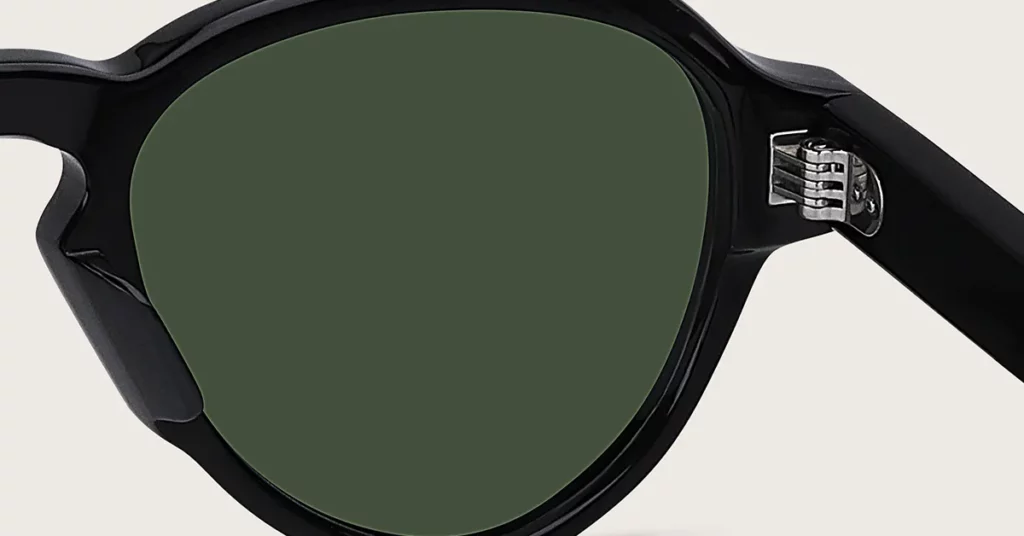
Scaling Hardware & Component Procurement
Component sourcing becomes a major point of failure as production scales. You must apply the same level of diligence to your hardware suppliers as you do to your acetate source.
Vetting Hinge Suppliers (e.g., Comotec, OBE)
Hinge quality directly determines product durability and customer perception of your brand. Premium suppliers like Comotec and OBE provide detailed specifications, including barrel count, material composition, and durability test data. Demand this information.
Critical Warning: Inferior hinges are the leading cause of warranty claims in acetate eyewear. Substandard components can have failure rates exceeding 15% in the first year, which will destroy your margins and brand reputation.
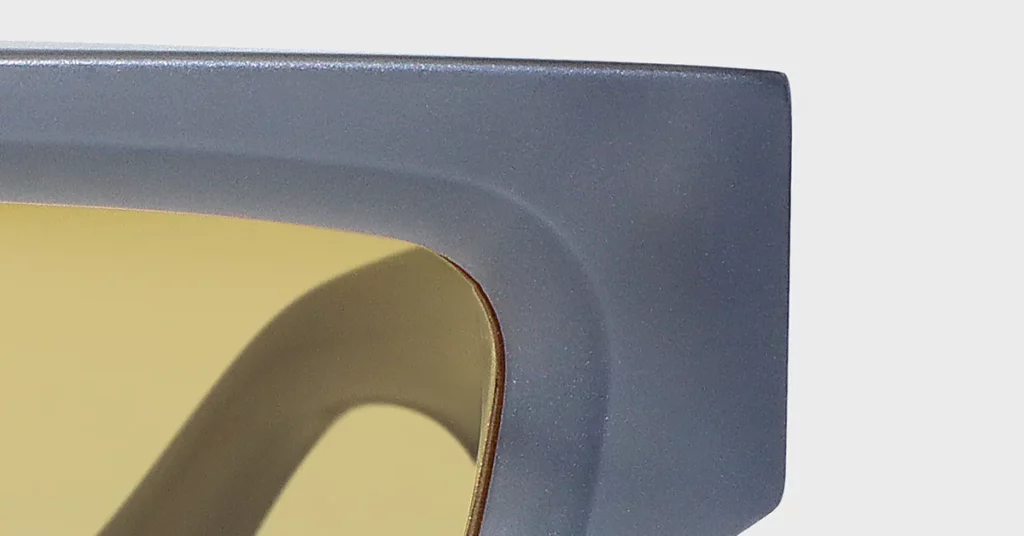
Assessing Core Wire Technology
Temple wire insertion requires precise heating and positioning to ensure long-term stability. Advanced manufacturers use temperature-controlled insertion systems to maintain consistent wire placement across thousands of units.
Best Practice: Wire insertion systems must maintain a positioning accuracy within ±0.1mm. This technical tolerance is what ensures consistent temple flexibility and structural durability.
Sourcing Secondary Components
Secondary components like nose pads and screws are often the weakest link in a scaled supply chain. These parts must meet the same quality standards as your frames while remaining cost-effective.
For Example: Nose pads must be made from hypoallergenic materials and have precise dimensional tolerances. This ensures a comfortable and proper fit for a wide range of facial structures, reducing customer complaints.
Strategic Impact of Component Standardization
Standardizing components has a significant positive effect on production velocity and long-term serviceability. By using standardized screw threads and hinge types, manufacturers can achieve 20-30% faster assembly times.
The Bottom Line: Standardization reduces inventory complexity and simplifies repairs. However, it can also limit design differentiation, a strategic trade-off you must consider in a crowded market.
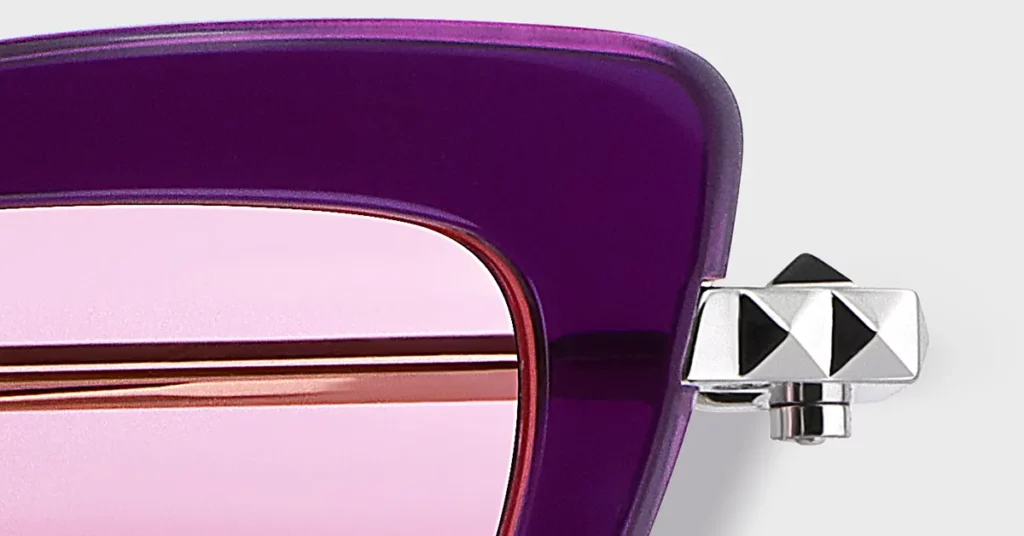
Stage 3: The Factory Floor: Vetting Production Processes
Mastering High-Volume Frame & Temple Machining
Achieving production efficiency at scale requires sophisticated machining capabilities that maintain precision while maximizing throughput.
Assessing CNC Capabilities: 3-Axis vs. 5-Axis Machines
A factory’s CNC machining setup dictates its production speed and design flexibility. 3-axis machines are efficient for standard frame geometries, while 5-axis systems are required for the complex, multi-dimensional cuts seen in premium designs.
Key Metric: A 5-axis CNC system can machine a complex frame front in 80-150 seconds. A 3-axis system would require 150-200 seconds for similar complexity, directly affecting output and cost.
Analyzing Machine Tolerance and Precision
Machine tolerance specifications are a direct indicator of quality at scale. You should prioritize partners that can achieve tolerances of ±0.005mm for critical dimensions. This is how you get perfect frame symmetry across thousands of units.
Best Practice: Manufacturers that demonstrate micron-level precision capabilities are signaling a serious investment in their quality infrastructure and technical staff.
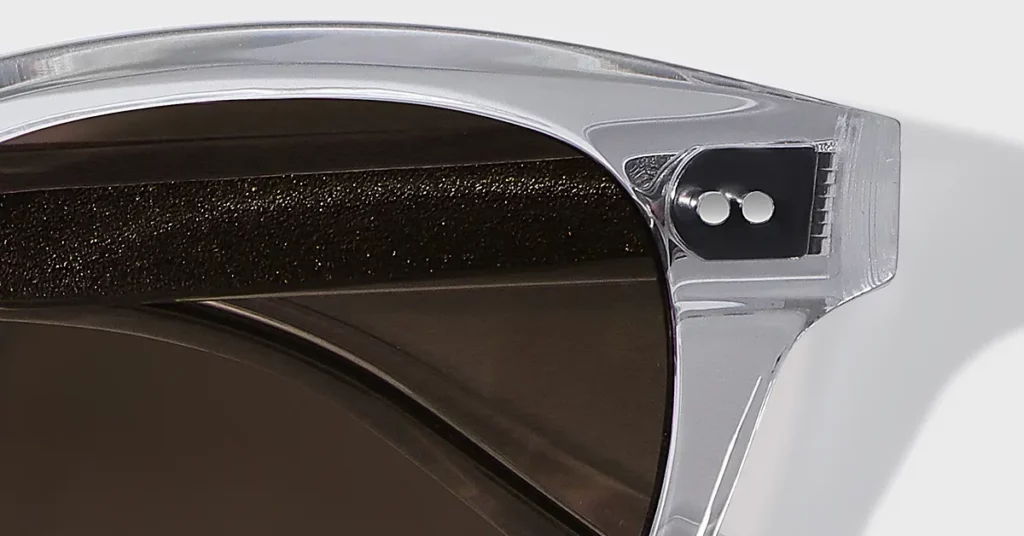
Evaluating Frame Curving and Lamination Processes
Frame curving needs precise temperature control and positioning to achieve consistent results. Top-tier manufacturers use automated curving systems with a temperature control accuracy of ±2°C to ensure uniform shaping.
Critical Warning: Inconsistent curving parameters result in frames that fail to meet optical standards. This leads to fitting issues and customer dissatisfaction, which ultimately harms your brand.
Vetting Component Integration and Finishing at Scale
Component integration becomes more complex as production scales, demanding sophisticated assembly techniques and rigorous quality control.
Heat-Embedding vs. Ultrasonic Hinge Insertion
Your partner’s hinge insertion method affects both production speed and long-term durability. Heat-embedding offers superior bond strength but takes 35-40 seconds per pair. Ultrasonic insertion achieves comparable results in 20-25 seconds.
For Example: Moving to ultrasonic hinge insertion can increase a factory’s production capacity by 40% while maintaining equivalent durability performance. This is a key efficiency gain.
Evaluating Automated Polishing Systems
Polishing methodology is a primary driver of surface quality and production throughput. A three-stage barrel tumbling process requires 72 hours but can process 450 frames per barrel. Manual polishing is slower, limiting capacity to 240 frames per worker per day.
Best Practice: The most effective manufacturers combine automated tumbling with selective manual polishing. This hybrid approach allows them to optimize both quality and efficiency, delivering a premium finish at scale.
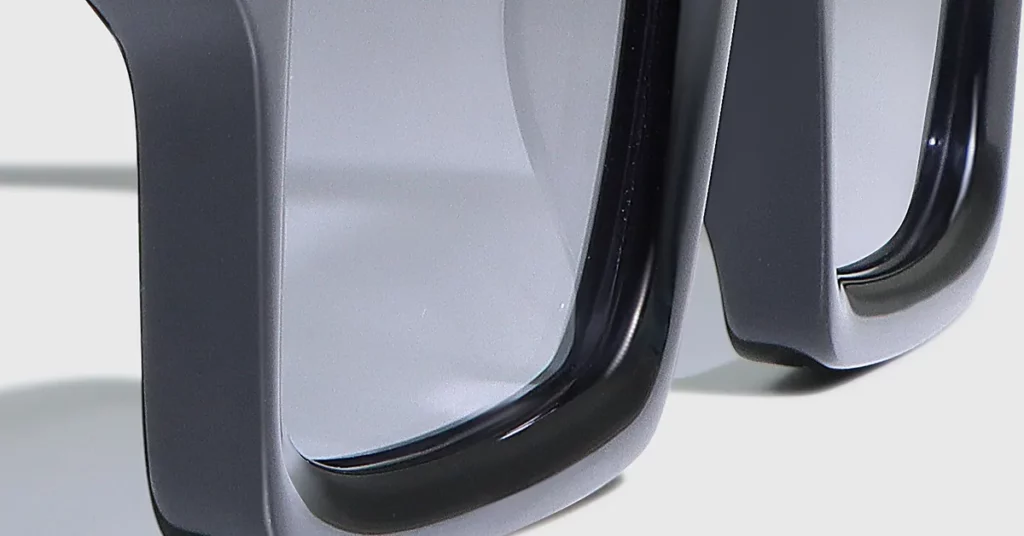
The Critical Role of Skilled Hand-Polishing
Hand-polishing is the final quality gate for premium eyewear. A skilled technician can address subtle imperfections missed by automated systems, ensuring the flawless surface quality required for luxury positioning.
Key Metric: Hand-polishing adds 3-5 minutes per frame. This extra time and cost can eliminate 80% of surface defects that would otherwise be rejected or require rework.
The Automation vs. Skilled Labor Dilemma
The balance a factory strikes between automation and skilled labor reveals its strategic philosophy on quality, cost, and scalability.
Vetting Investment in Modern Machinery
Investment in modern machinery signals a commitment to quality and efficiency. However, a factory that has completely automated every process may have sacrificed the craftsmanship that differentiates premium products.
Critical Warning: Manufacturers who over-rely on manual labor for core processes will struggle to maintain consistency and meet delivery commitments as your order volume increases.
Understanding the “150 Manual Processes”
Acetate eyewear production involves approximately 150 distinct operations. You must identify where skilled labor is essential for quality (e.g., final polishing) and where it creates bottlenecks that can be solved with automation.
The Bottom Line: Successful scaling requires a clear-eyed analysis of which processes benefit from automation and which demand skilled craftsmanship to protect your brand’s quality standards.
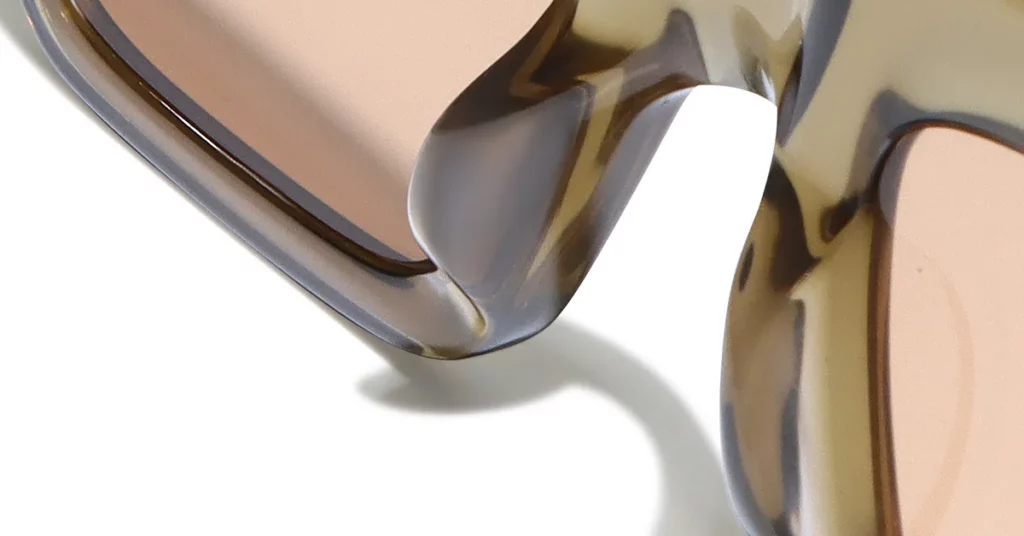
Stage 4: Bullet-Proofing Your Brand: Multi-Point QC Systems
Establishing a Zero-Defect QC Framework
As production scales, your quality control systems must shift from detecting defects to preventing them.
- Incoming Quality Control (IQC): This step prevents flawed materials from entering the production line. A good partner inspects 100% of incoming acetate sheets for dimensional accuracy, color consistency, and surface defects.
- In-Process Quality Control (IPQC): This identifies issues during production when they can be corrected cheaply. Key checkpoints include dimensional verification after CNC cutting and hinge alignment verification after insertion.
- Final Quality Control (FQC): This is the final check to ensure only perfect products ship. It must include frame alignment verification, surface quality assessment, and functional testing of all components.
Best Practice: An effective IQC system should detect material defects within 24 hours of receipt. This prevents downstream production delays and wasted material.
Key Metric: Strong IPQC systems reduce final inspection rejection rates by 60-70%, preventing expensive rework and protecting your delivery schedule.
For Example: FQC systems must verify temple spring tension, hinge operation, and lens groove accuracy to prevent the kinds of functional failures that lead to customer returns.
The Importance of Traceability
Traceability systems allow for rapid issue identification and containment when a quality problem emerges. Batch numbering and detailed QC reports facilitate targeted recalls and prevent widespread damage to your brand’s reputation.
Critical Warning: Brands without effective traceability systems face much higher costs and reputation damage when quality issues surface in the market. You will be unable to isolate the problem.
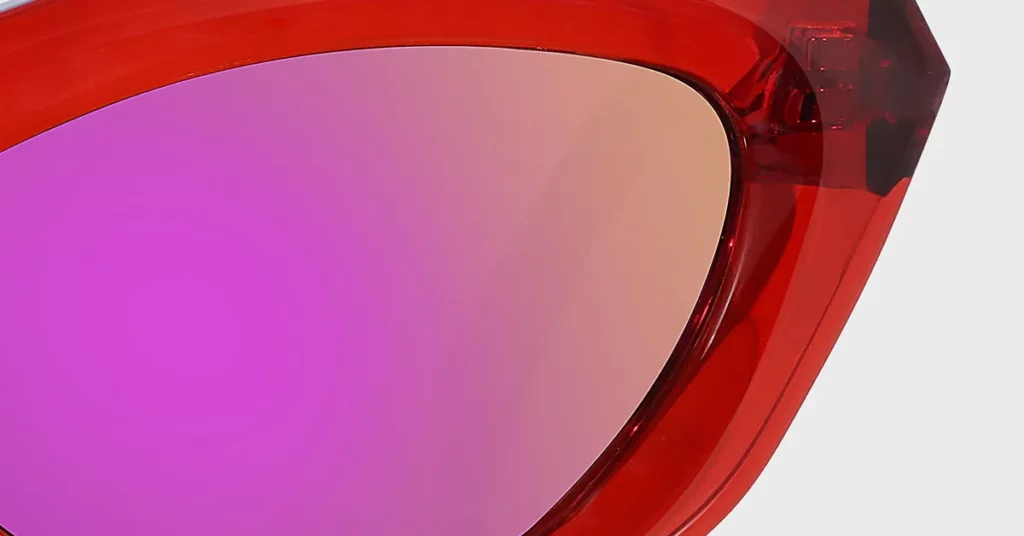
Ensuring Brand Standards Are Met Across Every Unit
Brand consistency is the output of a systematic quality control process that is applied to thousands of units without deviation.
Vetting Color Consistency
Maintaining color consistency across a large production run is a major challenge. Your partner must use spectrophotometers to provide objective color measurement, ensuring production units match approved samples within tight tolerances.
Best Practice: For premium eyewear, color deviation should not exceed ΔE≤2.0. Achieving this requires sophisticated color matching systems and disciplined process control.
Verifying Lens Groove and Bevel Consistency
Lens groove accuracy has a direct impact on optical performance. Your partner must use precision measurement systems to ensure groove dimensions remain within ±0.05mm tolerances across all production units.
Key Metric: Lens groove inconsistency is responsible for 25% of customer fitting issues. This makes it a critical quality control checkpoint that cannot be overlooked.
Evaluating a Partner’s Stress-Testing Protocols
Durability testing is what prevents warranty claims and protects your brand’s reputation. Your partner must perform comprehensive testing, including hinge fatigue testing, frame flex testing, and impact resistance verification.
For Example: Hinge durability testing should verify that a hinge can withstand 10,000+ open/close cycles without failure, far exceeding typical customer usage patterns.
Navigating Regulatory Compliance at Scale
As you enter global markets, regulatory compliance becomes more complex. Your product must adhere to standards like ISO 12870 for optical frames, which specifies dimensional tolerances, material properties, and safety requirements.
The Bottom Line: Compliance with international standards like ISO 12870, CE marking, and FDA requirements is a prerequisite for access to major global markets.
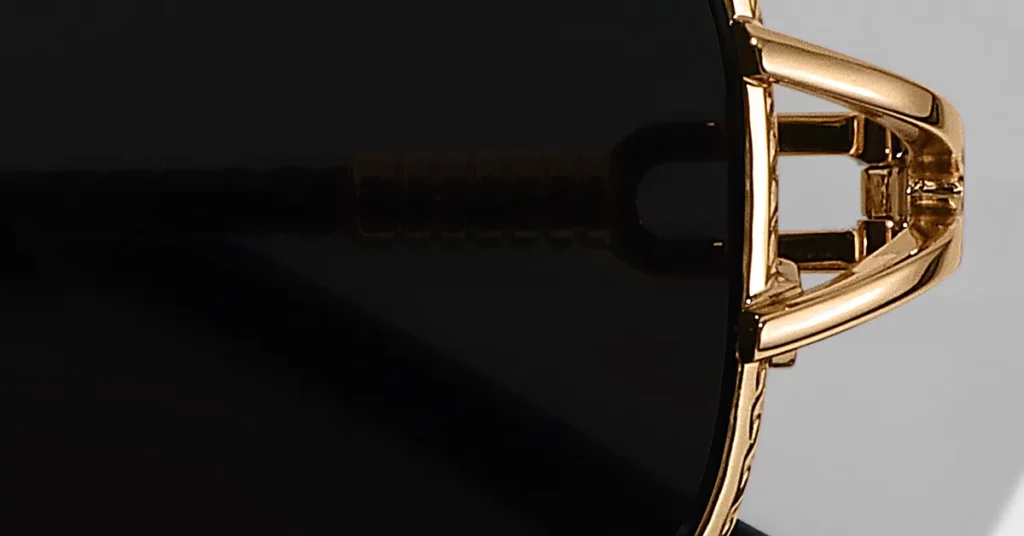
Stage 5: Forging a Growth Partnership
Choosing the Right Partnership Model
Your choice of partnership model has a major impact on product development speed, your ability to customize, and your long-term strategic flexibility.
- OEM (Original Equipment Manufacturer): This model provides maximum design control but requires you to provide comprehensive technical specifications and actively manage the project. Evaluate partners on their proven ability to execute complex designs.
- ODM (Original Design Manufacturer): This model offers faster time-to-market and lower development costs by using a factory’s existing designs and tooling. This can limit design differentiation, so evaluate partners on their design portfolio and customization options.
Best Practice: OEM partners should provide detailed capability assessments and reference projects that demonstrate they can handle similar complexity and quality requirements.
For Example: An ODM partnership can cut your development time by 6-8 weeks, providing access to proven designs and established manufacturing processes.
Intellectual Property Protection
As your partnership deepens, IP protection becomes paramount. You must scrutinize a potential partner’s data security protocols, NDA compliance history, and their track record of protecting client IP.
Critical Warning: Inadequate IP protection can lead to your designs being copied or sold without authorization. This damages your brand’s exclusivity and market position.
Analyzing Logistical Capabilities and Lead Time Realities
A manufacturer’s logistical capabilities have a direct effect on delivery reliability and your cash flow.
Deconstructing the 45-90 Day Production Cycle
You must analyze the full production cycle to identify potential bottlenecks. Material preparation typically requires 7-15 days, front processing 15-20 days, temple processing 15 days, and assembly 10-15 days.
Key Metric: The total production cycle for acetate eyewear ranges from 45-90 days. This variance is driven by design complexity and the level of customization required.

Assessing Global Shipping Expertise
International shipping expertise is what prevents expensive delays at customs. Evaluate a partner’s experience with global logistics, customs documentation, and freight management.
Best Practice: Partners with established logistics networks can reduce shipping time by 20-30% while ensuring proper customs compliance, getting your product to market faster.
Evaluating Communication and Project Management Systems
Effective communication systems are a predictor of project success. Evaluate a partner’s project management tools, communication protocols, and their responsiveness when issues arise.
For Example: Partners with dedicated project management systems provide real-time production updates and proactively identify issues, giving you full transparency.
Vetting a Partner for Long-Term Growth
A true long-term partnership requires alignment on innovation, sustainability, and shared growth strategies.
Future-Proofing Your Brand
Consumer and regulatory demands for sustainability will only increase. You need a partner with advanced R&D capabilities. Evaluate their investment in sustainable materials, circular production methods, and environmental certifications.
The Bottom Line: Partners with strong sustainability programs provide a competitive advantage as environmental regulations and consumer preferences evolve.
Evaluating Investment in Advanced Technology
Technology investment is an indicator of a partner’s commitment to future competitiveness. Assess their investment in 3D prototyping, advanced automation, and next-generation manufacturing technologies.
Key Metric: Partners who invest 5-10% of revenue in R&D and technology upgrades are demonstrating their long-term viability and innovation capability.
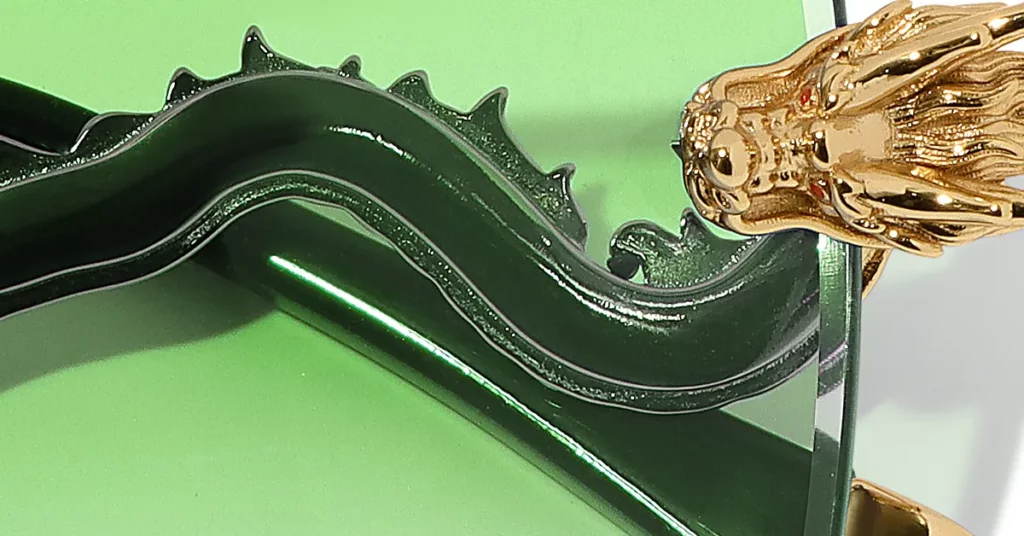
Conclusion
Successfully scaling acetate eyewear from 100 to 10,000 frames depends on a vetting process that treats manufacturers as strategic partners. The five stages detailed here provide a framework for identifying partners whose process maturity, quality systems, and business philosophy can support your growth. At Kssmi, we guide brands through this complex evaluation to build scalable, high-quality production strategies. Contact us for a private consultation to align your production with your brand’s growth objectives.
Frequently Asked Questions
1. What is the most common failure point when scaling acetate production?
The most common failure is inadequate Design for Manufacturability (DFM) planning. This leads to material waste rates over 30%, production delays of 6-8 weeks, and quality inconsistencies that damage brand reputation and profitability.
2. How does bio-acetate affect high-volume manufacturing?
Bio-acetate materials typically add 10-15% to raw material costs and may increase production time by 10-20% due to modified processing needs. Lead times are also generally 1-2 weeks longer than for standard acetate.
3. What technology is most critical for QC at 10,000 units?
Beyond the CNC machine, a spectrophotometer system is the most critical technology. It ensures color consistency across thousands of units, preventing deviations that are a primary source of customer dissatisfaction in scaled production.
4. How can I remotely audit a potential manufacturer’s QC?
Request detailed QC reports with batch numbering from recent production runs. Conduct live virtual factory tours focusing on IQC, IPQC, and FQC checkpoints. Finally, require pilot run documentation to verify consistency before committing to a full order.
5. What are the main differences between Italian and Chinese acetate?
Italian Mazzucchelli acetate offers superior color stability but has a 2-4 week lead time and costs 25-30% more. High-quality Chinese acetate from suppliers like Jimei or Jinyu offers cost savings and a faster 1-2 week lead time but may require more rigorous incoming QC.
